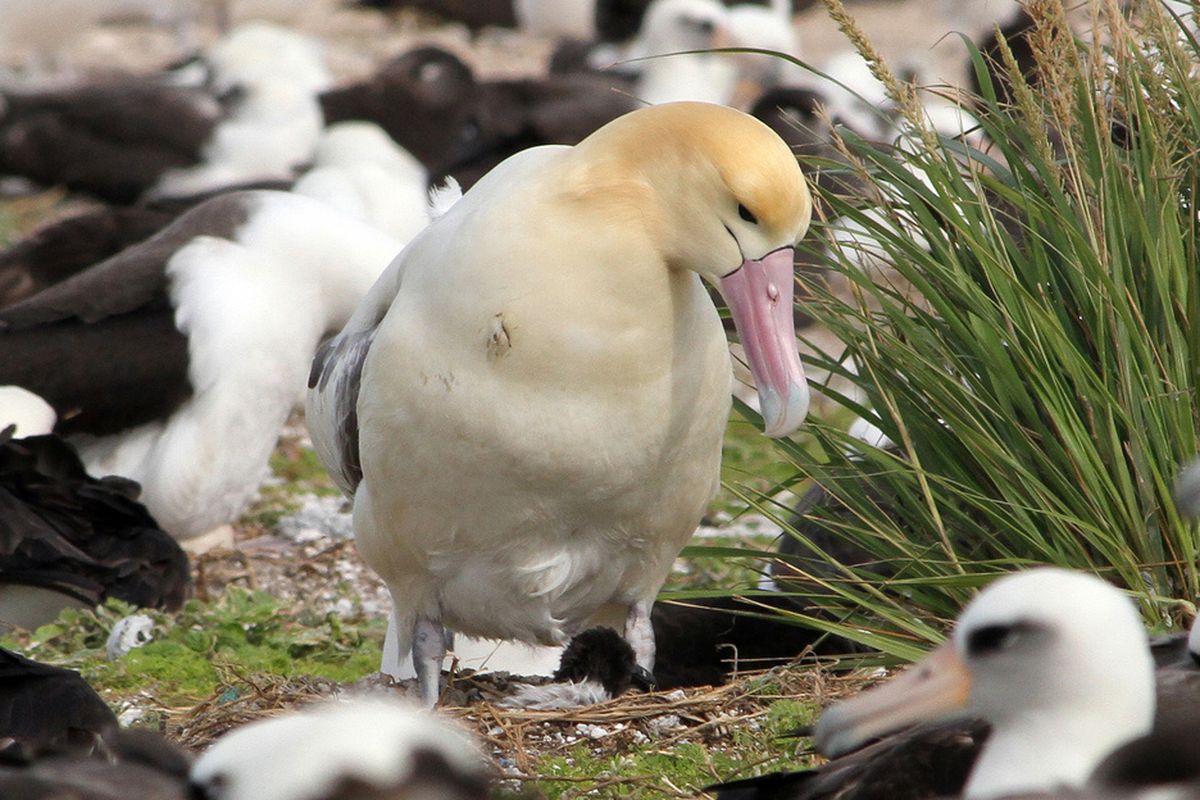Tsunami one more disaster for albatross
Thousands of birds lost on Pacific Island refuges, but heartening stories emerge

The albatross has had more ups and downs with Japan’s seismic events than the courtship flight of a snipe.
While the world focuses on Japan’s March 11 earthquake disaster, a small group of U.S. Fish and Wildlife Service biologists is tending to the ripple effects of the tsunami that washed over little specks of Pacific Islands 1,200 miles northwest of Honolulu.
Surrounded by epic expanses of water, Midway Atoll National Wildlife Refuge harbors hopes for maintaining rare bird species.
On Jan. 15, the first confirmed hatching of a short-tailed albatross outside of Japan occurred on Eastern Island, one of the three small flat coral islands in the refuge and a nursery for several species.
“We are all as excited as new parents,” Daniel Clark, refuge manager, said at the time. “The chick hatched during a major storm, but the parent is doing an excellent job of protecting it.”
Biologists have worked for years monitoring two species of ground-nesting albatrosses and restoring habitat.
The short-tailed albatross, also known as the golden gooney, was listed as endangered since 1970. It’s the largest seabird in the North Pacific with a wing span of up to 7.5 feet.
Establishing a new nesting colony is one of several important steps needed to continue the rare bird’s recovery. Volcanic activity regularly threatens the short-tailed albatross’ main nesting grounds on Japan’s Torishima Island.
The biologists’ excitement turned to anxiety on March 11, when tsunami waves swept across the islands’ nesting areas and killed more than 110,000 albatrosses – mostly chicks – at Midway Atoll alone.
The waves were another setback. Only four survivors were found from the 1,500 chicks in this year’s crop on Spit Island.
The losses total about 22 percent of this year’s hatch, leaving refuge staff with more resolve to continue improving and diversify nesting habitat.
Out of the waves, two inspiring stories have emerged as ghost crabs comb the beaches, cleaning up the carnage.
The endangered short-tailed albatross chick, the first born in the Hawaiian Islands in recorded history, was found washed off its nest, covered with mud and sand – but alive.
“Since the chick is incapable of fending for itself, the Service will carefully consider whether hand-rearing this bird is appropriate if it is determined that it is not being fed by its parents,” refuge officials said in a statement.
However, the chick seemed alive, well and apparently it was being fed by its parents this week.
Refuge rules require workers to let nature take its course with most other chicks and birds. While island workers made it through the tsunami, they’ve been heartbroken to watch many surviving chicks die.
After the tsunami, a “celebrity” Laysan albatross called Wisdom and her recently hatched chick also was missing.
Officials believe Wisdom, age 60, is the oldest-documented wild bird in the world.
Last week, Wisdom, identified by her leg band, returned unharmed to Midway.